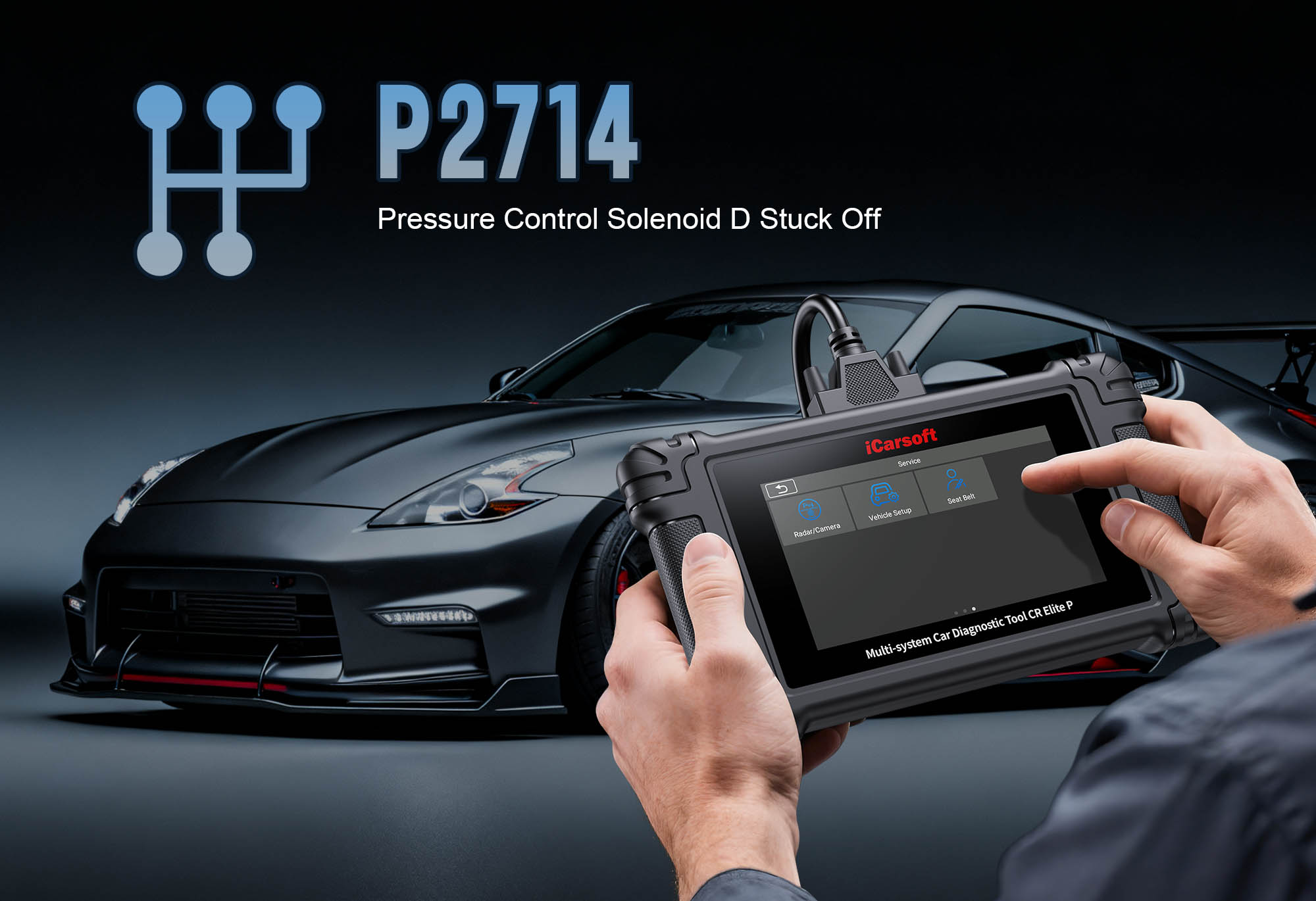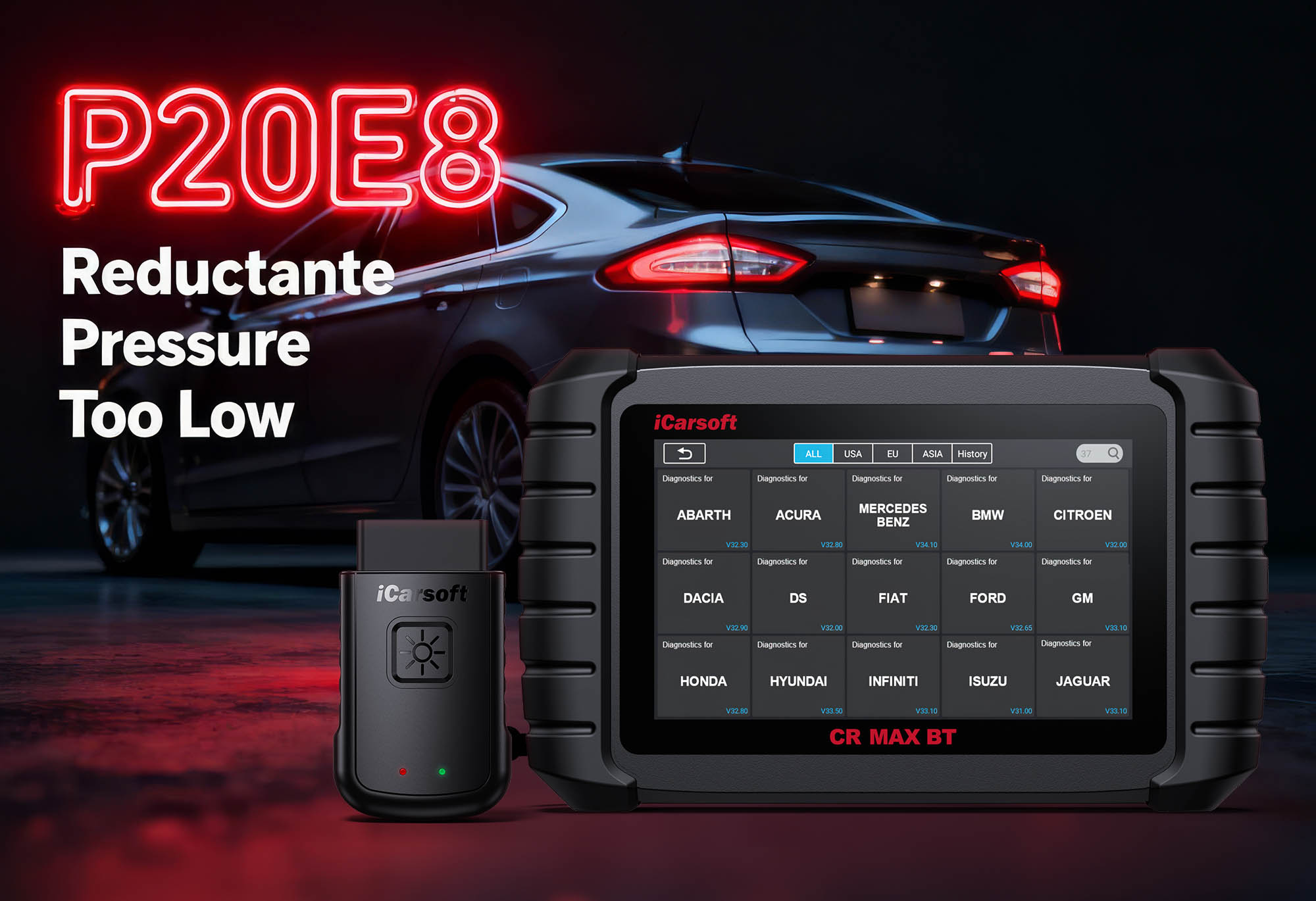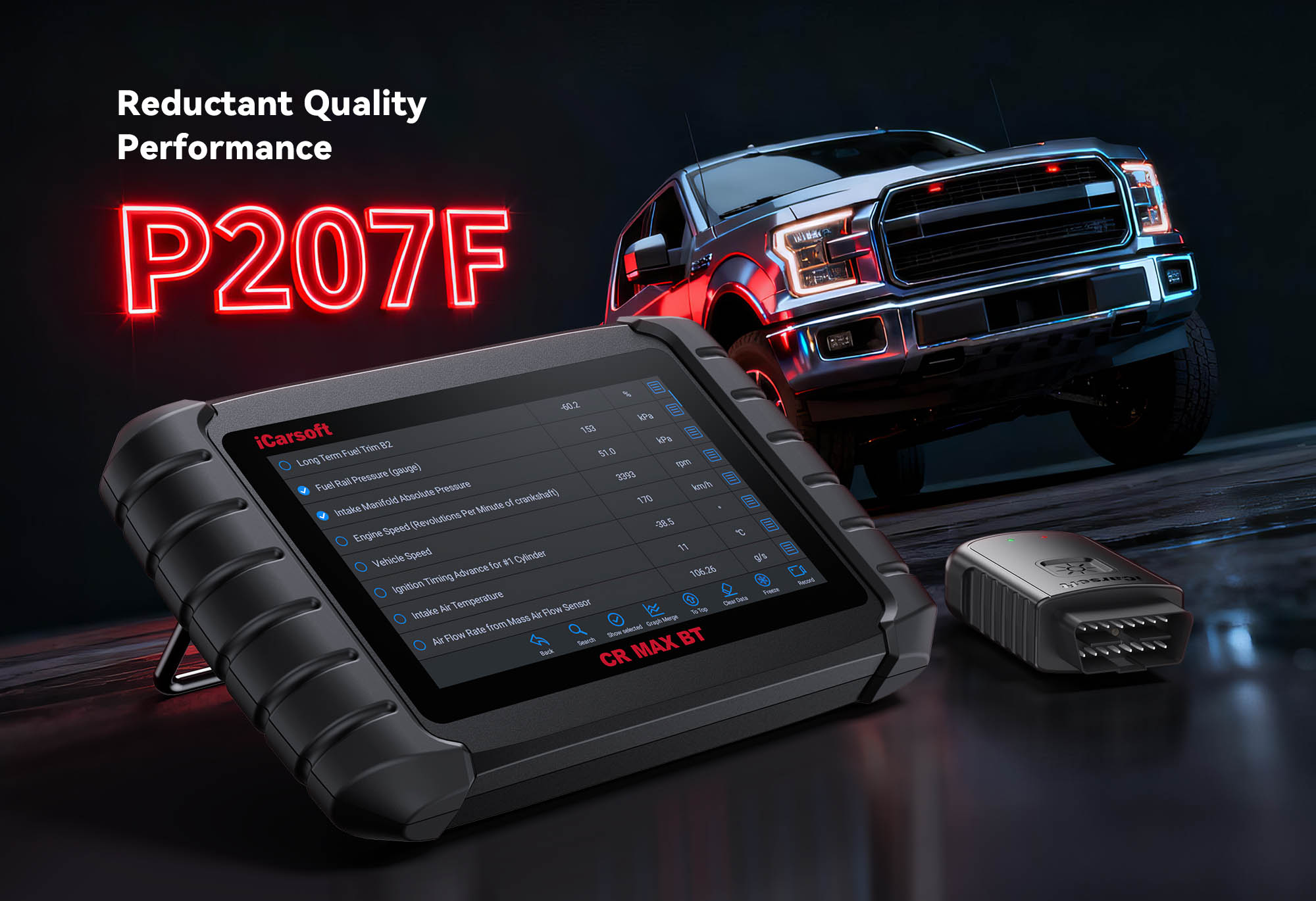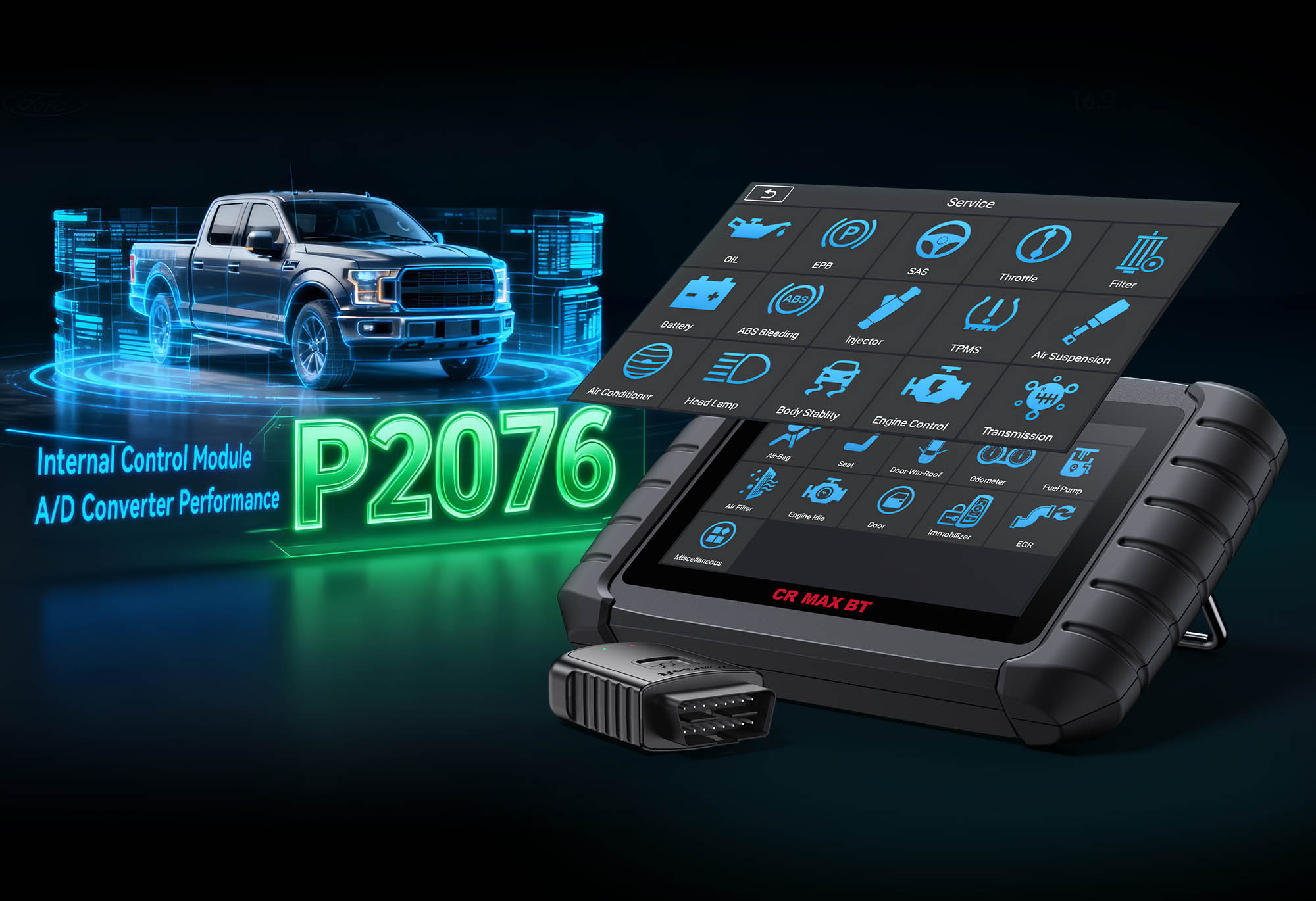Diagnose & Clear P2714 with iCarsoft CR Elite P: Fix Pressure Control Solenoid A Stuck Off (Automatic Transmissions)
If your automatic transmission slips during gear changes, delays shifting, or triggers a "Transmission Fault" warning, a diagnostic scan will likely return P2714. This OBD-II code stands for "Pressure Control Solenoid A Stuck Off"—a critical fault indicating the transmission’s Pressure Control Solenoid A (PCS-A) is unable to open when commanded by the Transmission Control Module (TCM). PCS-A regulates hydraulic pressure in the transmission, which controls clutch engagement, gear shifts, and torque converter lockup; a stuck-off solenoid disrupts pressure flow, leading to rough shifts, reduced fuel efficiency, and potential transmission damage if ignored.
Basic scanners may only flag "solenoid stuck off" but can’t monitor transmission hydraulic pressure, test solenoid electrical circuits, or verify TCM commands—leaving you unable to tell if the issue is a faulty solenoid, clogged valve body, or low transmission fluid. The iCarsoft CR Elite P, with its specialized transmission diagnostics, live pressure tracking, and bi-directional solenoid tests, solves this. Let’s break down how to diagnose and resolve P2714 with precision, leveraging the CR Elite P’s unique capabilities to restore smooth, reliable transmission performance.
Understanding P2714: Causes & Key Symptoms
Pressure Control Solenoid A is a vital component in automatic transmissions (especially 6-speed+ models like Ford 6R80, GM 6L80, or Toyota A760E). When it’s stuck off, hydraulic pressure can’t reach critical components, disrupting gear changes and torque transfer. Symptoms worsen as pressure imbalances damage clutches and seals:
Key Symptoms of P2714
-
Transmission Slippage: The engine revs higher than normal during gear changes (e.g., RPM jumps from 2,000 to 3,000 when shifting from 2nd to 3rd gear) but vehicle speed doesn’t increase proportionally.
-
Delayed Shifts: Shifts between gears take 2–3 seconds longer than usual (e.g., hesitation when accelerating from a stop).
-
Rough Shifts: Gear changes feel jarring or "clunky"—especially when shifting into drive or reverse.
-
Transmission Warning Light: Many vehicles display a dedicated "Transmission Fault" or "Check Transmission" light (often amber/red) alongside the check engine light.
-
Reduced Fuel Efficiency: Slipping gears force the engine to work harder, dropping mileage by 10–15%.
-
Limp Mode Activation: To prevent transmission damage, the TCM may limit the vehicle to 2nd or 3rd gear (Limp Mode), restricting speed to 30–40 mph.
Common Causes of P2714
|
Cause
|
Description
|
|
Faulty Pressure Control Solenoid A
|
Internal electrical failure (e.g., broken coil, stuck plunger) prevents the solenoid from opening when the TCM sends a signal.
|
|
Low/Contaminated Transmission Fluid
|
Low fluid levels reduce hydraulic pressure, while dirty fluid (with metal shavings or debris) clogs the solenoid’s valve, keeping it stuck off.
|
|
Clogged Valve Body
|
The valve body (which houses PCS-A) accumulates sludge from old fluid, blocking the oil passages that supply pressure to the solenoid.
|
|
Damaged Solenoid Wiring
|
Frayed wires, corrosion, or loose connectors in the PCS-A electrical circuit disrupt the TCM’s signal to the solenoid.
|
|
Failed TCM
|
A malfunctioning TCM doesn’t send the correct voltage to PCS-A (typically 12V to open), leaving the solenoid stuck off—rare but possible in older vehicles.
|
|
Solenoid Connector Corrosion
|
The PCS-A connector (mounted on the transmission case) becomes rusted or filled with fluid, breaking the electrical connection.
|
Why iCarsoft CR Elite P Excels at Diagnosing P2714
The CR Elite P outperforms basic tools with features tailored to automatic transmission diagnostics—critical for resolving P2714:
Live Transmission Pressure Tracking
Monitors hydraulic pressure in the circuit controlled by PCS-A (e.g., 50–200 psi, model-specific) in real time. Low pressure when the solenoid should be open confirms a stuck-off issue.
Bi-Directional Solenoid Tests
Sends direct commands to PCS-A to open/close manually, verifying if the solenoid responds to electrical signals (rules out TCM vs. solenoid faults).
Transmission Fluid Temperature (TFT) Monitoring
Tracks fluid temperature to ensure it’s within the optimal range (175–225°F/79–107°C)—overheating damages solenoids and thickens fluid.
AutoVIN Identify
Automatically retrieves your vehicle’s transmission model (e.g., Ford 6R80) and TCM software version, ensuring access to solenoid-specific specs.
Global Transmission Coverage
Works with 500+ automatic transmission models from Ford, Chevrolet, Toyota, Honda, BMW—supports torque-converter and dual-clutch (DCT) systems.
Solenoid Circuit Integrity Tests
Checks for open circuits, short circuits, or high resistance in PCS-A wiring, pinpointing electrical faults (e.g., broken wires, corroded connectors).
TCM Communication Tests
Verifies if the TCM is sending valid commands to PCS-A (via CAN bus) —confirms if the issue is a faulty TCM or failed solenoid.
Step-by-Step: Diagnose P2714 with iCarsoft CR Elite P
-
1. Initial Transmission Fluid Check (Most Critical First Step)
Low or dirty fluid is the #1 cause of P2714—start here:
1. Check Fluid Level: Park on level surface, start engine, idle 5 minutes (warm fluid). Locate dipstick (or use Component Location > Transmission > Fluid Dipstick). Fluid should be between "Cold" and "Hot" marks (or "Full" via Live Data > Transmission > Fluid Level). Add recommended fluid (e.g., Mercon LV, Dexron VI) if low.
2. Check Fluid Condition: Healthy fluid = bright red/pink, mild odor. Dark brown/black with burnt smell or metal shavings = contaminated—needs full flush (use Service Functions > Transmission > Fluid Flush).
-
2. Connect the CR Elite P & Confirm P2714
1. Plug into OBD-II port. Power on and select AutoVIN Identify to detect transmission model and TCM config.
2. Navigate to Transmission > Fault Codes > Read Codes to confirm P2714. Tap Code Details for insights (e.g., "Silverado 6L80: PCS-A Voltage 0V (Expected 12V); Check Wiring/Solenoid").
3. Resolve related codes (e.g., P0741, P0750) first—they often result from P2714.
-
3. Monitor Live Transmission Data (Pressure & Temperature)
Real-time data reveals root cause:
1. Keep engine running (fluid warm), shift through all gears to prime the system.
2. Navigate to Transmission > Live Data and monitor:
- PCS-A Circuit Pressure: Should rise to 50–200 psi (model-specific) during shifts. Near 0 psi = stuck-off solenoid.
- Transmission Fluid Temperature (TFT): Should stay below 250°F (121°C). Overheating = fix cooler first.
- PCS-A Solenoid Voltage: 12V when TCM commands open (during shifts). 0V = TCM/wiring issue or shorted solenoid.
-
4. Perform Bi-Directional PCS-A Solenoid Test
Verify solenoid response to direct commands:
1. Vehicle in "Park," parking brake engaged (safety—prevents unexpected movement).
2. Navigate to Special Functions > Transmission > Solenoid Control > PCS-A.
3. Select "Activate Solenoid"—tool sends 12V to open it. Listen for a "click" and check pressure:
- Good Solenoid: Pressure rises by 50+ psi within 2 seconds.
- Faulty Solenoid: No click, no pressure rise = stuck-off (needs replacement).
4. Select "Deactivate Solenoid"—pressure should return to baseline within 2 seconds. Slow drop = clogged valve body.
-
5. Test PCS-A Wiring & Connector
Check for electrical faults if solenoid fails step 4:
1. Locate PCS-A: Use Component Location > Transmission > Solenoids > PCS-A—internal (valve body, needs pan removal) or external (transmission case).
2. Disconnect connector (external) or remove pan (internal, use Torque Guide for pan bolts: 8–10 Nm).
3. Circuit Test:
- Power Wire: Multimeter (DC Voltage) on power pin + ground. Ignition "ON" = 12V; 0V = blown fuse (check via Fuse Guide).
- Ground Wire: Multimeter (Ohms) on ground pin + chassis. <1 ohm normal; >5 ohms = clean/replace ground strap.
- Signal Wire: Resistance between solenoid signal pin and TCM pin (via Wiring Diagram). <5 ohms normal; >10 ohms = damaged wire.
4. Clean corroded connectors with contact cleaner + dielectric grease.
-
6. Inspect/Clean the Valve Body (For Internal PCS-A)
Remove sludge blocking PCS-A:
1. Remove transmission pan: Drain fluid, remove bolts (follow Service Guide).
2. Locate valve body (aluminum component) and PCS-A (cylindrical solenoid labeled "PCS-A").
3. Clean: Remove PCS-A, spray valve body and solenoid with transmission cleaner, brush away sludge.
4. Inspect: Check for stuck plunger or broken coil—replace PCS-A with OEM part if damaged (use Part Lookup).
5. Reinstall: Attach PCS-A, valve body, and pan with new gasket (torque bolts to specs). Refill with fresh fluid.
-
7. Update TCM Firmware (If False Code Is Suspected)
Fix software-related signal issues:
1. Connect CR Elite P to Wi-Fi (System > Wi-Fi Settings).
2. Navigate to System > Update Manager > TCM Firmware—scan for updates (e.g., "Toyota A760E: PCS-A Calibration Update").
3. Install updates, restart engine. Clear P2714 and check if it returns.
-
8. Repair & Clear P2714
Fix the root cause:
- Low/Contaminated Fluid: Add fluid or flush (use Fluid Flush function).
- Faulty PCS-A: Replace with OEM solenoid (external: $50–$150; internal: $100–$300 + pan labor).
- Clogged Valve Body: Clean (step 6) or replace (OEM: $300–$800).
- Wiring/Connector Faults: Repair with heat-shrink tubing; clean connectors.
- TCM Malfunction: Dealer reprogram or replace (last resort: $500–$1,500).
Clear Code: Navigate to Transmission > Fault Codes > Clear Codes and confirm deletion.
Reset Adaptations: Select Special Functions > Transmission > Adaptation Reset to clear learned shift patterns.
-
9. Validate the Repair
Ensure smooth transmission operation:
1. Start engine, warm fluid to 175–225°F.
2. Test drive 20–30 minutes: Check for smooth shifts (no slippage/delay/clunking), no warning lights, stable RPM during shifts.
3. Post-Repair Data: Confirm PCS-A pressure rises correctly and TFT stays in range (via live data).
4. Run Transmission System Check (under OBDII Functions) to verify all components pass self-tests.
Preventing P2714 Recurrence
The CR Elite P helps maintain transmission health:
-
Transmission Fluid Maintenance: Use Service Reminder to change fluid every 60,000–100,000 miles (sooner for towing). Use manufacturer-recommended fluid.
-
Solenoid Checks: Test PCS-A every 30,000 miles—catch early sticking before P2714 triggers.
-
Cooler Maintenance: Inspect transmission cooler (near radiator) every 15,000 miles for clogs—prevent overheating.
-
TCM Updates: Enable automatic Wi-Fi updates to install TCM calibration fixes promptly.
Conclusion
P2714’s stuck-off Pressure Control Solenoid A is a transmission-critical fault, but the iCarsoft CR Elite P simplifies diagnosis with live pressure tracking, bi-directional solenoid tests, and wiring checks. Whether adding fluid, replacing a solenoid, or cleaning a valve body, this tool ensures you target the root cause—avoiding costly transmission rebuilds and restoring smooth, reliable shifts.
For DIYers and professionals alike, the CR Elite P’s transmission-specific features, global coverage, and intuitive interface make it the ideal tool for resolving P2714. Keep your automatic transmission performing at its best, extend its lifespan, and drive with confidence—all with one professional-grade diagnostic tool.
FAQs About P2714 Code
Q: Can I drive with P2714?
A: Short trips (to a repair shop) are possible, but prolonged driving risks severe transmission damage (e.g., burned clutches). Limp Mode limits speed to 30–40 mph, so fix P2714 immediately.
Q: How much does it cost to replace Pressure Control Solenoid A?
A: Parts cost $50–$300 (external solenoids are cheaper). Labor adds $100–$300 if the valve body/pan needs removal. The CR Elite P saves by avoiding unnecessary valve body replacements.
Q: Why does P2714 return after solenoid replacement?
A: Unresolved issues like contaminated fluid, a clogged valve body, or damaged wiring. Use the CR Elite P’s live pressure data to retest and ensure the new solenoid receives proper pressure and voltage.
Q: Can a transmission fluid flush fix P2714?
A: Sometimes—if the solenoid is stuck due to dirty fluid. Flushing removes debris blocking the solenoid. Use the CR Elite P’s Fluid Flush function for vehicle-specific steps, then retest the solenoid with bi-directional controls.





